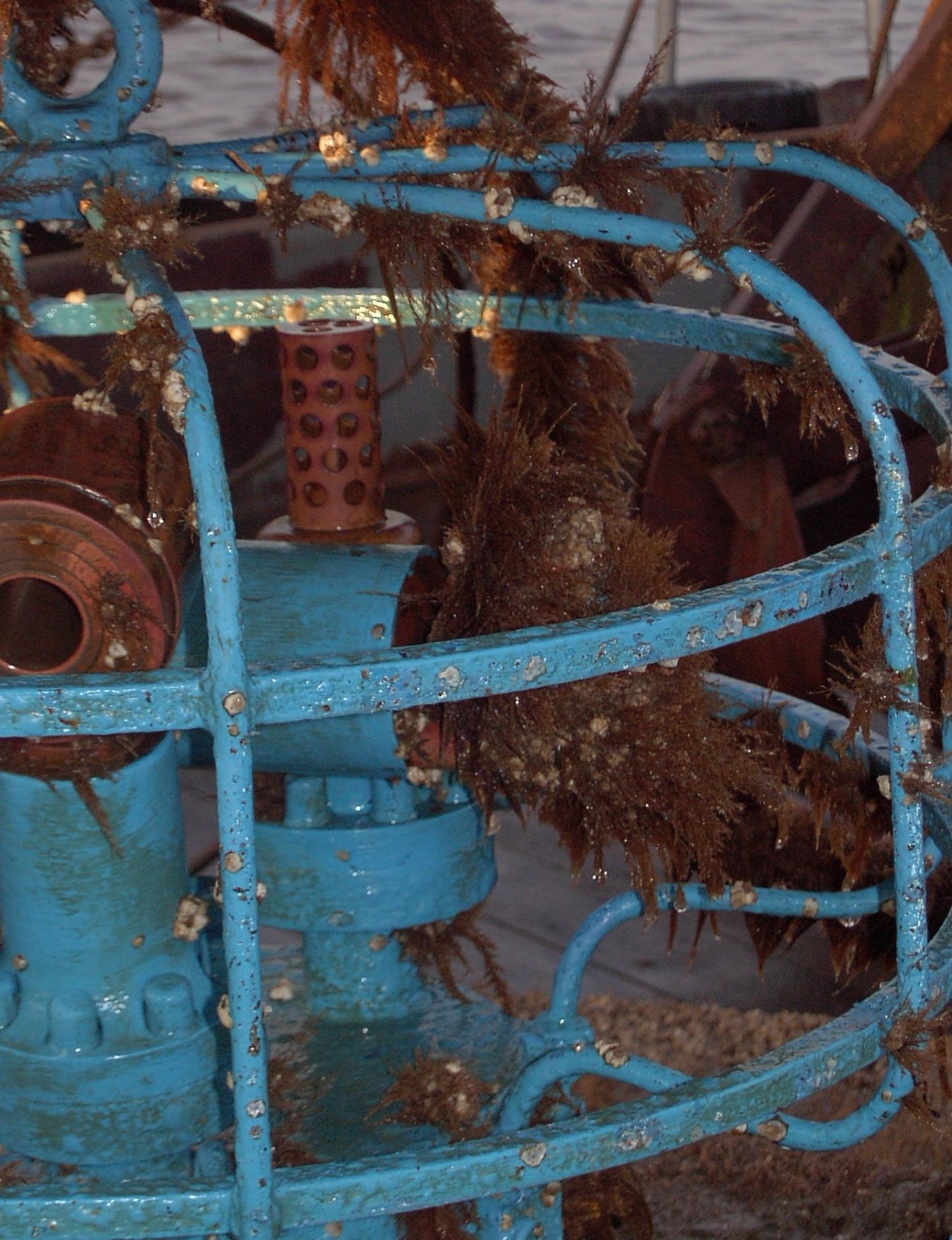


In the field of drinking water disinfection, water treatment, process water treatment and waste water treatment, but also in water monitoring, measuring systems for the collection of standard parameters such as temperature, conductivity / salinity, pH, chlorophyll, pCO2 and turbidity play a decisive role. When remaining in aqueous media, sensor systems are covered within a short period of time with a growth layer of various organisms (biofilm), which impairs the functionality and reliability of the sensor. The current practice in dealing with the problem of fouling / scaling consists in the frequent replacement of the sensor components as well as the establishment of maintenance- and cost-intensive mechanical cleaning cycles or the use of ecologically harmful, water-endangering chemicals. The aim of the project is therefore to develop a highly effective but non-toxic antifouling concept for water monitoring on the basis of specifically functionalized, water-barrier-forming layers and thus to meet the customer's requirements for a measurement technology that is not maintenance-intensive but nevertheless stable over the long term.
Decentralized automated systems for monitoring the water quality in rivers, dams, lakes, the sea, or in drinking water treatment and distribution require long-term stable and low-maintenance operation. Effective anti-fouling is essential here, but should not influence the water quality itself or even release toxic substances. Therefore, the project focuses on the development of a non-toxic and functional antifouling coating of components and assemblies for water monitoring in drinking and service water treatment. Specifically, anti-adhesive coating systems on glass and steel materials are to be established. These substrates are to be functionalized in the project with an effective antifouling coating, which for the first time combines defined polyhydrophilic functional polymers (PEG, POx) with poly-dipolarionic functional polymers (betains) (combination layer system). For substrate coupling or intercalation, a membrane-analogue immobilization matrix based on tetraether lipids is used. These biomimetic coating systems are characterized, optimized, and tested under in vitro conditions using established microbiological models and finally evaluated by the companies ‑4H-JENA engineering GmbH and UV-Technik Speziallampen GmbH in field tests under real conditions. In order to apply the developed and optimized coatings in an economically profitable way, the development of a spray-based coating technology is planned. The core objective of the project is to establish a qualitatively new, anti-adhesive anti-fouling coating using a targeted combination of polyhydrophilic polymer chains such as PEG and POx and poly dipolar ionic components in cooperation with FSU Jena and the Institute for Bioprocess and Analytical Measurement Technology (Institut für Bioprozess- und Analysenmesstechnik e. V.). The use of tetraether lipids as linker (immobilization matrix) between substrate and organic coating represents a novelty for this application. Furthermore, the project partner CAM-D Technologies GmbH carries out computer simulations to elucidate the molecular mechanisms for the production of combinatorial coating systems with sufficient antifouling properties. With conventional experimental methods and procedures, such questions about the molecular structure of tetraether lipid/betaine and the water barrier that forms on solid substrates are difficult or impossible to answer. As a further innovation in the proposed project, the partner IFB Halle GmbH will develop a fermentation process for Archaea as well as a purification regime for its membrane lipids.
Users -4H-JENA engineering GmbH and UV-Technik Speziallampen GmbH draw up precise product specifications of the properties of the coatings to be achieved. Target parameters such as layer stability, optical/chemical/physical properties (adhesive strength, optical transparency, temperature resistance), and the intended antifouling potential are defined. These product specifications are checked by the coating developers and incorporated into a specification sheet in coordination with the users. Furthermore, the coating developers elaborate required specifications with specific requirements regarding the quality of the extracted membrane lipids and incorporate it into a specification sheet in cooperation with the IFB. The partner IFB carries out the establishment of a reproducible and continuous fermentation of different archaea and their downstream processing with regards to the isolation of membrane lipids. A scale-up of the process provides the basis for an industrial use of the method.
At the same time, work is done on the development of an efficient coupling chemistry of PEG/POx and dipolar ionic molecules such as betaines on TEL coated substrates. For this purpose, the existing protocols for PEG/POx modification of TEL must be adapted and optimized to the newly isolated lipids by the partner IFB. Furthermore, the main task of the FSU is the polymer synthesis of the above-mentioned structures on an expected scale, in order to guarantee the coating tasks to be performed. In particular, polymers with different but defined molar masses (chain lengths) have to be produced in order to optimize the degree of functionalization of the surfaces by selective mixing of the different polymer lengths. With the mesoscopic molecular fragment method (MFD) the mechanism of adsorption, the structure and thus the binding efficiency of tetraether lipid layers on surfaces of different substrates (glass, stainless steel) is investigated. Changes in the structure caused by chemically functionalized lipids as well as changes in the properties of chemically modified structures with regards to the adsorption of water shall be elucidated in detail on a molecular level. Atomistic simulations based on molecular-mechanical force fields (MM/MD) will be used in particular to clarify the question of water structure (barrier effect) and the binding of water molecules to TEL surfaces or, in addition, hydrophilized TEL surfaces. The users are expected to carry out stability tests on the layers under simulation of application-oriented conditions. Also the developed layer systems will be tested for functionality in the field test at the potential application site (drinking water treatment plant; river water). The comprehensive analysis of the coating systems after stability and field tests is carried out in cooperation between users and film developers using light, fluorescence and electron microscopy.

Michael Boer
07745 Jena
Institut für Bioprozess- und Analysenmesstechnik e.V. (iba)
Friedrich-Schiller-Universität Jena -
Institut für Organische Chemie und Makro-molekulare Chemie
Photo credits: oben ©-4H- JENA engineering GmbH, unten ©-4H- JENA engineering GmbH